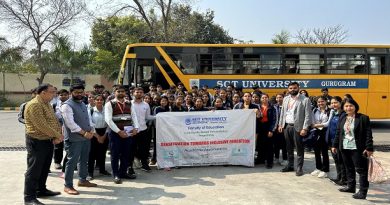Community awareness for rabies in a rural area of Gurugram
Dr. Jagbir Malik
Rabies is a fatal disease transmitted to human beings through contact or bites of infected animals, both domestic and wild. Domestic dogs are a common reservoir of the rabies virus and the majority of human deaths are caused by dog-mediated rabies. However, the wildlife (sylvatic) cycle of rabies also exists among wild animals (e.g., monkeys, bats, raccoons, and foxes) serving as the maintenance host. Rabies virus is transmitted via saliva of rabid animals. India is endemic for rabies transmission except for territories of Andaman-Nicobar and Lakshadweep islands. In India yearly 17.4 million dog bite cases are reported and only 3 million receive post-exposure prophylaxis. Use of anti-rabies vaccine is low in India and that of immunoglobulin is negligible, due to which we lose around 20,000 human lives from rabies each year. In recent times, some Asian countries such as Thailand, Philippines, and Sri Lanka, have been able to reduce human rabies deaths to a great extent, but India neighboring Pakistan and Bangladesh still report thousands of human deaths due to rabies. Rabies is a disease of low public health priority. A national rabies control program (NRCP) exists, yet not very effective, there is a need to escalate efforts for rabies prevention and control to achieve zero rabies by 2030.Proper data on rabies death is lacking and need to make the community aware regarding rabies. Department of Community Medicine in SGT University, Budhera organized one such event in village Chandu in coordination with panchayat.
Dr Jagbir Malik Professor in Community Medicine coordinated the activity. A total of sixty-eight personnel participated in the event. World rabies day is being celebrated every year on 28th September all over the world. Organizations like GARC participate in such activities and coordinate with local organizations. Our event was also registered with GARC. Rabies is still a public health problem in India and dog population needs to be controlled by strengthening animal sterilization activities with the help of veterinary doctors. Community awareness activities are very useful, particularly for rural settings. Such activities be planned, and proper publicity may be done by involving panchayat leaders. Grassroot level health workers such as ASHAs and (AWW) Anganwari workers from ICDS must be involved in such activities.
Author: Dr Jagbir Malik MD, MSc Professor Community Medicine, SGT University, Gurugram

